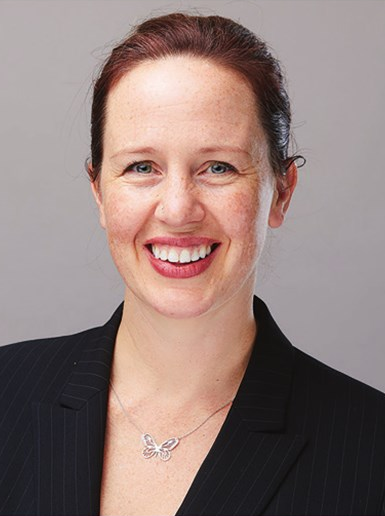After facilitating a couple of workshops on workplace organization (a particular brand of which is known as 5S in manufacturing circles), I got to thinking about how the space around us can work for or against us.
Throughout my career, I have run up against skepticism about 5S – that is, people think that the way a space is organized has nothing to do with what goes on in the space itself. So why does it matter? Sure, we want people to work more efficiently, make clearer decisions, feel less stressed out and make fewer mistakes, but why should we care what their work area looks like?
The answer is interesting: whether we realize it or not, we are constantly interacting with our environment. Simply put – if our immediate environment is a mess, our thoughts will be a mess too! And if we are thinking messy thoughts, the actions that follow will reflect that messiness, and be more random. If you’re looking to find original inspiration, stimulate your creativity and shake things up, a messy chaotic workspace might be just the thing! But in the context of a manufacturing workplace, or other workplaces where the goal is to have highly repeatable, stable processes which produce the same exact outcome over and over again (i.e. a group of characteristics and outcomes that can be collectively called Quality), this is a bad thing.
So let’s run through the steps of 5S (or Workplace Organization) so you can see how they fit together:
SORT – This is the first step, where we isolate everything we don’t need and get rid of it. This step is just like when you go through the interior of your car (or the contents of your backpack if you’re a non-driver) to get rid of any accumulated stuff. These places probably contain extra items that literally weigh you down – decreasing fuel efficiency, creating an annoyance (also known as visual noise) and possibly even represent a threat to your health and safety (that mouldy sandwich, for example!). Getting rid of those heavy books you don’t read will certainly lessen the likelihood of shoulder strain, and removing extra items from a workplace can reduce the probability of tripping. So not only does getting rid of unneeded materials in the workplace make it look nicer, it can also increases the area’s level of health and safety.
SET IN ORDER – Now that you’ve pared down to only the essentials that you need (and this takes some time to define as you can imagine – everyone has a slightly differing definition of ‘need’ so some compromise amongst team members is needed), you can put them into a logical layout. The things you use all the time should be close at hand, and the things you only need once a week can be stored a little further away. This step has many-fold benefits. You save time – and time is money! You’re less annoyed and stressed – because you’re not looking all over the place. Finally, you’re less likely to injure yourself lifting or stretching for a frequently-used item that’s stored in an out-of-the-way spot – because you put all frequently-used items somewhere handy.
SHINE – In this step you give everything a good old-fashioned scrub. Not just because it looks good either! When there’s less dirt and grime around, it’s easier to see what’s going on. Leaking equipment? You’ll be able to see because the floor is otherwise clean. Missing tool? It will be obvious (especially once we get through with the 4th S too). The point is that if you’re not just cleaning, you’re also paying attention. Shine is one of the steps you’ll need to do over and over again, and since you have to look at an area or item to clean it, your cleaning time doubles as inspection time. Everyone from a doctor to a mechanic to a builder can tell you that it’s easier to fix a problem that’s caught early (or better yet, before it happens at all), and that’s the same whether you’re talking about people or cars or the foundation of a house. Inspect and detect (and prevent) now to avoid nasty surprises later.
STANDARDIZE – Here’s where it really gets interesting. At this point you’re beginning to really design the activities that are happening in the area, in short by making systems. Where does the equipment go? Mark off areas, and label them. How often are inspections happening? Make a schedule. How are you going to know that the activities are being carried out as planned? Make a checklist. Left to its own devices, an area will return to a state of chaos, eventually if not immediately. Without some guides or error-proofing, employees will make mistakes. You want to make it easy for everyone working in that area not only to keep up the high level of organization but also to do their work properly. ‘A place for everything and everything in its place’ has been established. The systems you create in this step will help keep it that way.
SUSTAIN – The final step is the most important but the most difficult, because it means a change of habit for everyone working in that area. We are all creatures of habit. Also, we will struggle against doing anything that feels unnecessary, because we don’t want to waste our time, and initially 5S might feel like something that is apart from the ‘real’ work. So getting everyone on board is a pivotal part of doing a workplace organization (or re-organization) effectively. After that buy-in is obtained, how would we sum up what the Sustain step really contains? Just keep marching. Do the inspections, maintain the standards, and keep cleaning up! Just as important, the standards must be improved and evolved as new problems and chronic issues surface. If the work activities change, then the workplace organization system will have to be updated to match it.
Order and standards in the work environment are an imperative part of how we work – because of how they leverage our natural connection to our surroundings. When the space around you is dominated by clean, empty surfaces and regular, orderly patterns instead of chaos, your brain has less extra information to process – therefore more energy and attention to focus to what really matters: kicking butt at your work and turning out high quality results, day in and day out!

